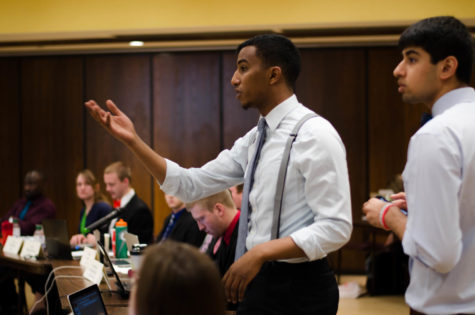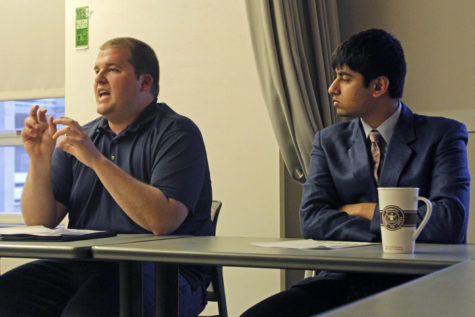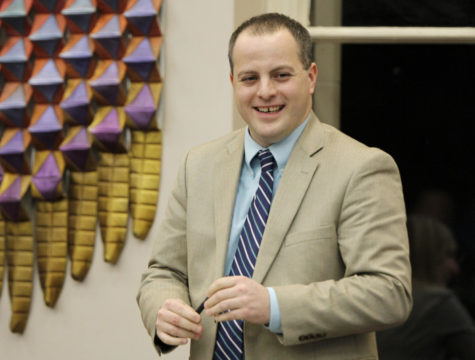GSB, City Council discuss bike paths, Campustown traffic
October 26, 2012
The Government of the Student Body held its annual joint meeting with the Ames City Council Wednesday, Oct. 24. Mayor Ann Campbell and City Manager Steve Schainker were in attendance alongside council members Jami Larson, Victoria Szopinski and Peter Orazem.
First on the agenda was discussion of transportation both on campus and in Ames. Many GSB representatives raised concerns with bike paths in Ames and the popularity of bikes as transportation for the growing student population.
In response to questions, Schainker and Orazem explained how the city is working to improve bike transportation in Ames and said each year the city is adding more bike paths and working to make streets more biker friendly. Schainker credited the creation of the bike paths to continued cooperation between the city and university.
Next on the agenda was a discussion of the expansion of the city of Ames. One concern brought up was the growth of the West Ames community. With seven new apartment buildings being put up and a growing student population in West Ames, Schainker said they are “more aggressively recruiting commercial activities.” He also mentioned that South Duff Avenue is presently the most rapidly developing retail area in Ames.
Another important issue raised by a GSB senator was the lack of lighting along Mortensen Avenue, a road traveled by many off-campus students. Schainker mentioned this is university property and agreed the city and university should work together to get lighting added. Orazem sympathized with the students, saying he knows of the issue, especially with the fatality on the road a few years ago.
The meeting moved on to the record enrollment of students at Iowa State, where Szopinski responded to student concern by explaining the strong possibility that Iowa State is seeing a peak in enrollment, and that in the coming years Iowa State might see a decrease in new student enrollment.
GSB then asked about the city’s plans for Veishea with a record number of people on campus. After an explanation from the mayor about the city’s plans to increase general police presence and security as usual, Schainker put the issue back on the students. He encouraged people to help lower crime rate during Veishea by avoiding peer pressure, locking doors and taking other precautions to stay safe.
The next topic on the agenda moved the conversation from current students to alumni. Schainker brought up there are more than a hundred professional jobs available in Ames and asked what the city can do to make Ames a more desirable place for recent graduates.
Suggestions from students ranged from the addition of retail stores to increased communications between local employers and Career Services at Iowa State, and the GSB senators suggested social media as a way to better communicate with students.
The final item on the agenda was Campustown, which focused a lot on previous discussions of the possibility of cameras being added to Welch Avenue. For the most part, students argued against the cameras, though City Council members were given the opportunity to explain their reasoning.
Council members explained that the cameras would be put in place for the purposes of monitoring crime, and would not be used to track the activities of students. No decisions were made on the issue.
Another GSB representative brought up the possibility of making Welch a pedestrian only street. Schainker agreed it would be nice for students, but the negative effect it could have on businesses would cause an issue. Alternative ideas such as making it pedestrian-only on weekends were suggested.
The meeting ended after the Campustown discussions, and GSB thanked the council members, Schainker and Campbell for their presence at the meeting.










